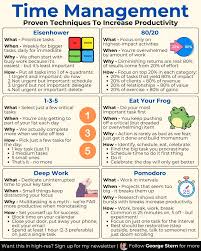Do you ever feel like there’s never enough time in the day to get everything done? What if I told you that with a few simple changes, you could triple your productivity in just one week? Sounds too good to be true, right? But it’s absolutely possible when you know the right steps to take. In this article, we’ll explore practical, easy-to-follow strategies that anyone can apply to achieve more in less time.
Before we dive into the details, here’s a quick roadmap of what we’ll cover:
Table of Contents
| Sr# | Headings |
|---|---|
| 1 | Understand Your Priorities |
| 2 | Master the Art of Time Blocking |
| 3 | Minimize Distractions |
| 4 | Use the Right Tools and Technology |
| 5 | Develop Consistent Habits |
| 6 | Bonus: The Power of Saying “No” |
| 7 | Conclusion |
| 8 | FAQs |
1. Understand Your Priorities
If everything is important, then nothing is. One of the biggest reasons people struggle with productivity is because they try to do too much at once. Ask yourself: What tasks will truly move the needle?
Identify Your Goals
Start by listing your top 3-5 goals for the week. Whether it’s completing a work project, exercising regularly, or spending quality time with family, having clarity on your goals will help you focus your energy.
The Eisenhower Matrix
Use tools like the Eisenhower Matrix to classify tasks into four categories:
- Urgent and Important: Do these immediately.
- Important but Not Urgent: Schedule these for later.
- Urgent but Not Important: Delegate these tasks.
- Neither Urgent Nor Important: Eliminate them.
This approach ensures you’re spending time on what truly matters.
2. Master the Art of Time Blocking
Ever wonder how successful people seem to have more hours in their day? The secret is time blocking.
What is Time Blocking?
Time blocking is a simple technique where you divide your day into blocks dedicated to specific tasks. Think of it as creating an appointment with yourself.
How to Implement Time Blocking
- Plan Your Day the Night Before: Spend 10 minutes each evening organizing your schedule.
- Set Time Limits: Assign realistic durations for each task. For example, dedicate 2 hours to deep work in the morning.
- Group Similar Tasks: Batch tasks like responding to emails or making phone calls into a single block.
By structuring your day this way, you’ll avoid the trap of multitasking and stay laser-focused on one thing at a time.
3. Minimize Distractions
Distractions are productivity’s worst enemy. Whether it’s your phone buzzing or colleagues dropping by, they can derail even the best-laid plans.
Create a Distraction-Free Environment
- Turn Off Notifications: Put your phone on silent or airplane mode.
- Set Boundaries: Let people around you know when you’re unavailable.
- Declutter Your Workspace: A clean desk equals a clear mind.
The Pomodoro Technique
Use the Pomodoro Technique to stay focused. Work for 25 minutes, then take a 5-minute break. Repeat this cycle four times, then enjoy a longer 15-30 minute break. This method keeps your mind sharp and prevents burnout.
4. Use the Right Tools and Technology
Sometimes, productivity is just about working smarter, not harder. Thankfully, technology offers plenty of tools to help you stay on track.
Top Productivity Tools
- Task Management Apps: Tools like Trello or Asana help you organize tasks and track progress.
- Note-Taking Apps: Use Evernote or Notion to capture ideas and keep them handy.
- Focus Apps: Apps like Forest or Focus@Will can help you stay concentrated by minimizing digital distractions.
Automation is Your Friend
Automate repetitive tasks. For instance:
- Use email filters to organize your inbox.
- Set up automatic bill payments.
- Use tools like Zapier to connect apps and automate workflows.
5. Develop Consistent Habits
Success doesn’t come from what you do occasionally; it comes from what you do consistently.
Start Small
Don’t try to overhaul your entire routine overnight. Pick one or two habits to focus on, such as waking up 30 minutes earlier or drinking more water.
Track Your Progress
Keep a habit tracker to monitor your consistency. Apps like Habitica or a simple checklist can work wonders in keeping you accountable.
The 1% Rule
Aim to improve by just 1% each day. Over time, these small changes compound into significant results—much like how saving small amounts of money leads to a big sum over time.
Bonus: The Power of Saying “No”
Sometimes, the most productive thing you can do is say “no.” If a task or commitment doesn’t align with your goals, don’t hesitate to decline politely.
How to Say No Gracefully
- Be honest but kind. For example: “I’d love to help, but I’m fully booked this week.”
- Offer alternatives if possible, such as referring someone else who can assist.
By guarding your time, you’ll have more energy to dedicate to what truly matters.
Conclusion
Boosting your productivity doesn’t require drastic measures or complicated systems. By understanding your priorities, managing your time wisely, minimizing distractions, leveraging technology, and building consistent habits, you can achieve more in just one week than you ever thought possible.
Remember, productivity is a journey, not a destination. Start small, stay consistent, and watch how these changes transform your life.
